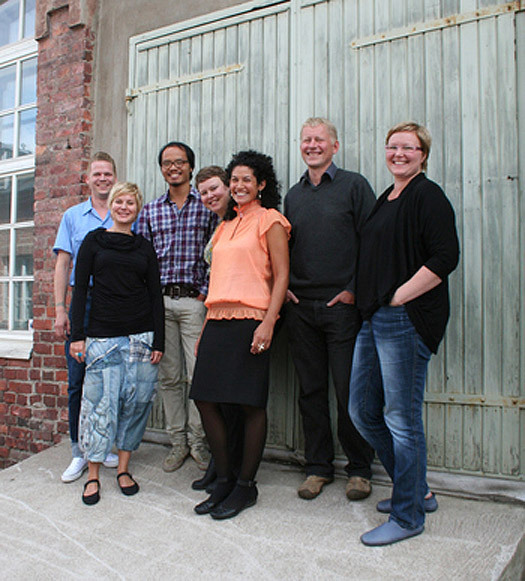
Along with “sustainability,” “wellbeing” is one of those words that is worthy, but hard to sell. Few would disagree that we need more wellbeing and less wasteful consumption — but the word lacks a visceral edge. It conjours up images of a well-run camp-site, or retirement community. Good to have, but not a destination to fight for.
Full marks, then, are due to Aalto University in Helsinki. They have made wellbeing their spearhead project in next year's World Design Capital [WDC] festivities.
(I should disclose I was the guest of Aalto's Wellbeing team last week. I gave a kick-off talk for them on Wellbeing in the Age of Wicked Problems.)
In order to bring the subject to life the Aalto team (pictured above) will commission twelve projects jointly with the cities of Helsinki, Espoo, Kauniainen and Lahti. Each project will address such real-world challenges as services to enhance a care home for elderly people; ways to improve the effectiveness of psychiatric care units; how to create smoke-free public environments.
These are early days. The 365 Wellbeing project will inevitably seem abstract for some months while conversations are nurtured, and projects defined, in the various communities. The first service prototypes are unlikely to emerge before the second half of 2012.
In choosing wellbeing as its theme in WDC Aalto has positioned itself astride a bit of a fault line. It is dawning on some designers in Helsinki that this innocuous word has radical implications for mainstream, business-as-usual, design.
More focus on wellbeing means, for example, less focus on the highly-branded products, services and spectacles that comprise a big part of the design industry's traditional work. Behind its bland exterior [and that of it's equally bland-sounding cousin, happiness] is evidence that wellbeing can be a replacement for — not an additon to — traditional economic activity.
WDC, as a model, was not set up to to explore uncomfortable differences. It was set up to promote design as a good thing in-and-of-itself. This something-for-everyone approach to design festivals no longer makes sense. For example, eighty per cent of the environmental impact of products and services is determined at the design stage; and the great majority of the communications and branding that fuel the ecocidal consumer economy involves input from the design business. Why celebrate those?
If WDC 2012 marks the moment that we stop pretending that all design is marvelous, or even defensible, just because it is design, then great. If Aalto's designers and their city partners discover that wellbeing demands more creative innovation than they anticipated, and pens the way to a vast amount of new work, then better still.

